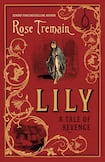
Winter seems the right time of year for Rose Tremain’s new novel, Lily, a Victorian melodrama about an orphaned child abandoned on the cold, dark streets of 1850s London. The baby is found by a policeman, Sam Trench, who hands her over to the Foundling Hospital, a real life Dickensian-like workhouse where illegitimate children must pay back their debt to society.
The hospital isn’t the only nod to Dickens in this novel. There’s the eponymous orphan title, the skilled characterisation, the fun with names (Trench with his entrenched viewpoint, the dazzling escort Belle Prettywood), a short spell in a rural idyll versus the hard times of city life, and the linking of appetite with love, or its lack, the deprivation of both body and soul that the heroine Lily experiences for much of her young life. Over the course of this pacy, action-packed story, Tremain shows her range as an author in delivering an absorbing morality tale of Victorian London.
That the bestselling English author can turn her hand to whatever genre she chooses comes as no surprise. Her novels and stories have been published in 30 countries, and have won, among other awards, the Orange Prize, the Dylan Thomas Award, the Whitbread Novel of the Year and the James Tait Black Memorial Prize. This new book not only recalls Dickens but also his contemporary Wilkie Collins. More recent comparisons include Michael Faber's The Crimson Petal and the White, and The Mermaid and Mrs Hancock by Imogen Hermes Gowar.
As with those novels, the period detail in Lily is seamlessly done, the world and era coming instantly to life: “The winter is so hard in London that frost caresses the black railings, like a sugar-coating, and even the slops in the gutter freeze over in a caramel-coloured glaze.” Two interwoven narratives depict Lily’s troubled past as an orphan in the foundling hospital and her present circumstances working as a seamstress for Belle Prettywood’s Wig Emporium, which is, surprisingly, an actual wig emporium and not a brothel.
The danger of two timelines is that one will be more vibrant – typically, the past wins out – but in this book both are compelling. In the present section, Sam Trench has resurfaced in Lily’s life, her former saviour who now, somewhat creepily, wants to be her lover. The fact that Sam is already married and considers himself an upstanding member of society should be enough to give the plot tension, but Tremain ramps things up by having Lily allude to a secret in her past that she fears Sam will uncover if she allows him to get too close.
The contrast between bucolic Suffolk and the miserable hospital is a shock not easily metabolised
An omniscient narrator repeatedly reminds the reader of this secret, giving a forced feeling to proceedings, and the source of the trouble, when revealed, is grimly unoriginal but certainly realistic. Occasional cliché – “Lily’s heart begins to beat wildly. Now that he is there, she wants more” – and a tendency to tell rather than show can also detract from an otherwise engaging story.
For the most part, Lily is an evocative and emotionally affecting tale, with many of its details historically accurate. Foundlings in Victorian society were often fostered from the hospital at infancy and sent to stay with families in rural locations for their early childhood, but by law, “no child could remain with their foster family for more than six years”. Even if the families wanted to keep the child – as happens with Lily – they had no choice but to return them, with unsurprisingly negative consequences for both the children and their foster parents.
The contrast between bucolic Suffolk and the miserable hospital is a shock not easily metabolised. Lily finds herself confused, alone, abandoned all over again in what is essentially a prison for children: “A single rushlight would be placed in each dormitory and by this fragile gleam, they would try to dress themselves, as the nurses inspected the beds for ‘accidents in the night’. And there were many of these. The smell of urine lingered permanently in the air.”
What it takes to survive such a world is the question underpinning this peculiar and affecting novel. Along the way, there are mentors and saviours, villains and thieves, and enough twists and cliffhangers to keep readers guessing, which again feels fitting for a novel of this period. Throughout, Tremain’s characteristic perceptiveness gives a more subtle momentum. At times, the learnings are bald and arrestingly accurate: “The world can be cruel to children and it can be capricious.” Elsewhere, they are lyrical, as when Lily describes herself and the other foundlings as “the carriers of the sins of our mothers”. Either way, the handing down of the misery to those who least deserve it makes for a compelling read.









